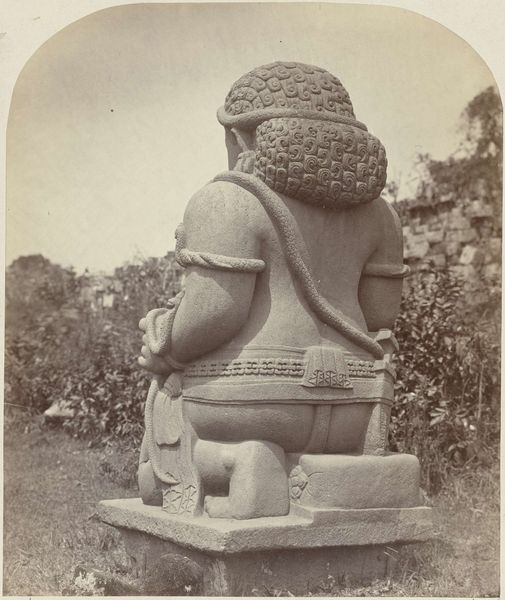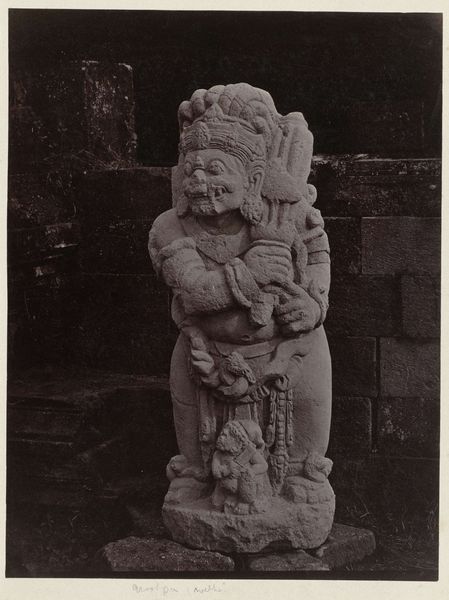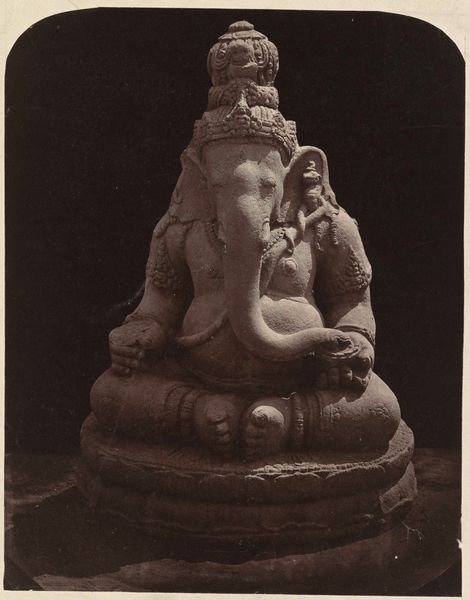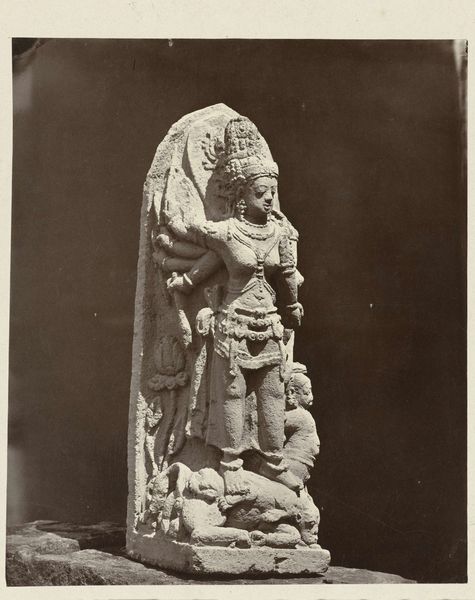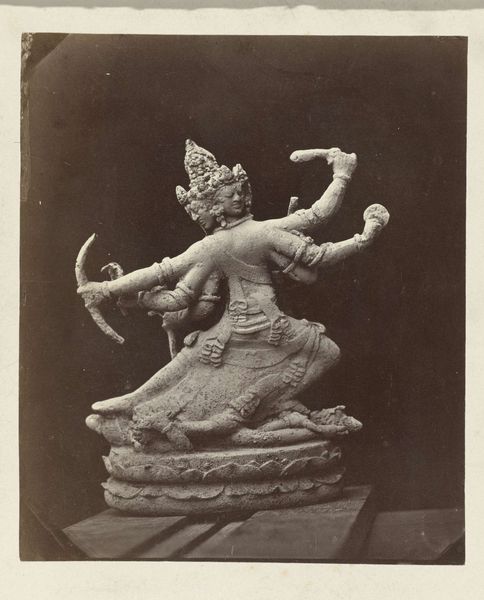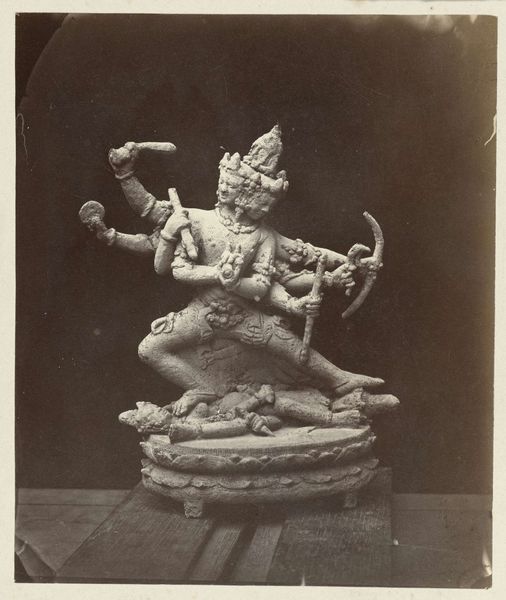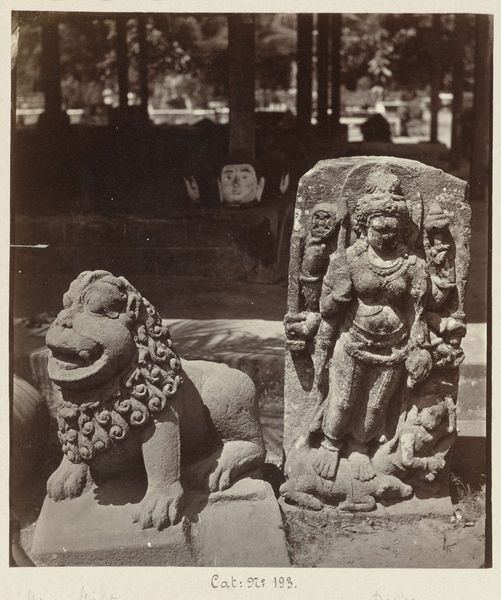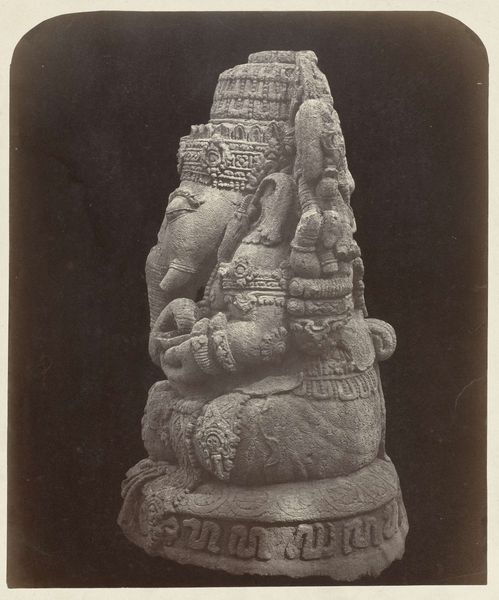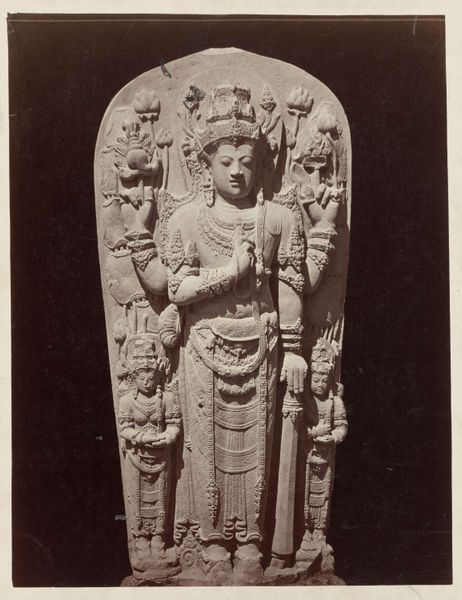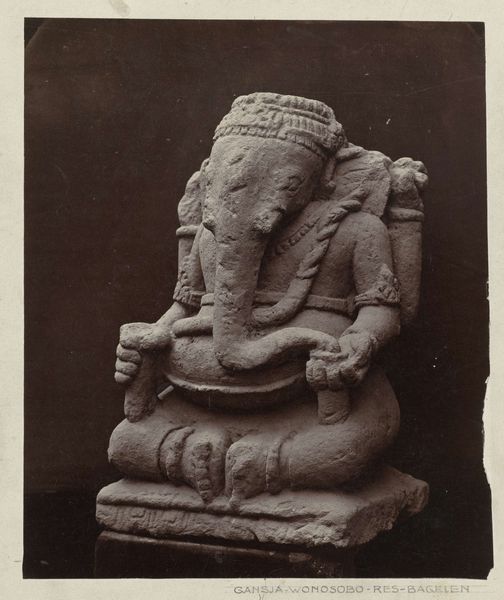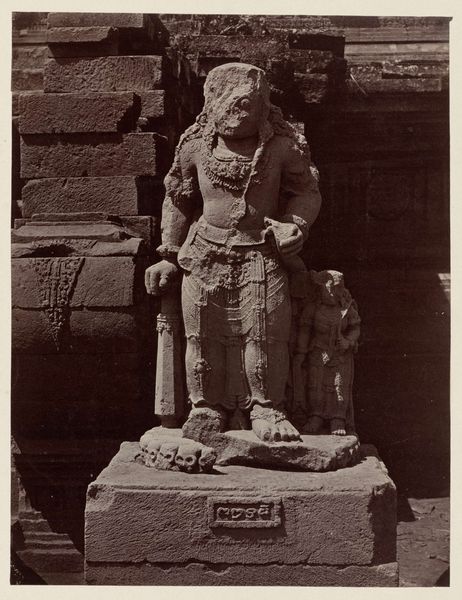
Candi Sewu (Temple complex)(Buddhist) one of the two colossal rakshasas at the east entrance. Yogyakarta district, D.I. Yogyakarta province, 8th -9th century. Possibly 1865 - 1867
0:00
0:00
bronze, photography, sculpture, albumen-print
#
portrait
#
asian-art
#
bronze
#
photography
#
ancient-mediterranean
#
sculpture
#
19th century
#
albumen-print
Dimensions: height 340 mm, width 290 mm
Copyright: Rijks Museum: Open Domain
Editor: So, this is an albumen print, a photograph, by Isidore Kinsbergen, taken sometime in the 1860s. It shows one of the rakshasa statues at the entrance to Candi Sewu temple complex in Java. It's imposing, almost intimidating. What's your take on it? Curator: My perspective is drawn to how this image, created by a European photographer in colonial Indonesia, engages with and perhaps appropriates Indonesian cultural heritage. What do you notice about the way the statue is presented, and how might that connect to the broader power dynamics of the time? Editor: I guess I see the way it's framed, like a formal portrait. But what does that mean in this context? Curator: The photographic 'portrait' monumentalizes the statue but also flattens its cultural significance, presenting it as an object to be cataloged and consumed by a Western audience. Think about who had access to this image at the time, and how it might have shaped their understanding—or misunderstanding—of Javanese culture and Buddhist beliefs. The albumen print transforms a spiritual guardian into a specimen, potentially reinforcing colonial power structures. Does the statue itself, even as a still image, still exude power to you? Editor: That’s a really interesting point. I hadn’t thought about the photograph as a colonial tool. It does shift the power dynamic, doesn’t it? Curator: Exactly! Kinsbergen's photograph gives us insight into how photography itself operated as a cultural and political tool in the 19th century. It allows us to discuss the power dynamics inherent in the act of representation and how those dynamics are historically situated within colonial structures. Considering that, how do you think contemporary viewers can best engage with images like this respectfully? Editor: I suppose by being aware of that history and considering it in our interpretations. I definitely have a different perspective on this image now! Curator: Precisely. Recognizing the multifaceted history of a work, even a photograph, and understanding the forces that shaped it allows us to engage in a much more thoughtful way.
Comments
No comments
Be the first to comment and join the conversation on the ultimate creative platform.
